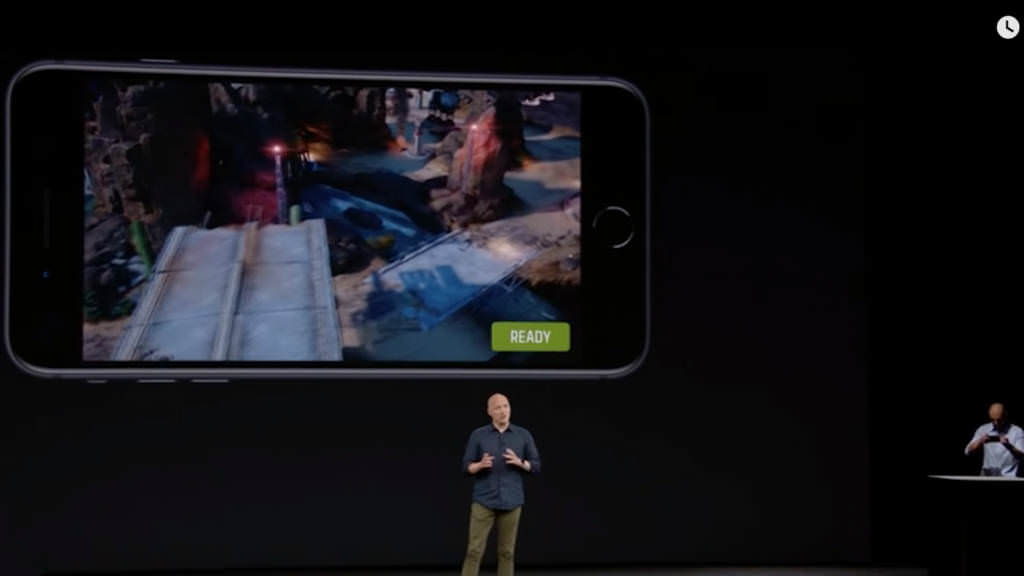Apple’s annual keynote placed a heavy focus on the integration of augmented reality (AR) that begins with its big software update on September 19. IOS 11 will introduce ARKit and AR capabilities to hundreds of millions of iPhones worldwide—creating a race for developers to create and market the next Pokémon GO.
Demonstrations during the Apple Event included other uses for AR, such as enhancing a baseball game with stats or identifying constellations in real-time. However, it was in mobile AR gaming that the demonstration really shines.
Directive Games’ upcoming real-time strategy game The Machines renders a digital battlefield on top of any real table, where players control the action through an iPhone camera. Players will be able to battle one another in the same room or in online multiplayer. Even the sound is location-based—adapting sound levels and clarity based on where the player is standing in relation to the virtual action.
Games currently account for 82 percent of the mobile AR market’s total revenue, SuperData reports, so Apple is well-positioned to profit from iOS 11’s new features.
“By bringing AR to 400 million devices with the release of iOS 11, Apple’s phones will contribute a hefty chunk of this year’s mobile AR revenue of almost $1 billion,” predicted Stephanie Llamas, VP of research and strategy for SuperData Research in a statement. “Games will be a major driver for growth to start since they have the most obvious monetization model (free-to-play microtransactions versus upfront premium purchases).”
The mobile AR market is projected to grow from $1.01 billion in 2017 to $18.69 billion by 2020, according to SuperData. By 2020, games will account for 18 percent of the mobile AR market’s total revenue.
Apple’s focus on AR is fueling a sort of “space race” to bring the best AR game technology to market. Google showed off its ARCore developer tool mere weeks ahead of Apple’s keynote. ARCore enables augmented reality features on regular smartphones as opposed to high-end devices such as the Asus ZenFone AR, which uses Google Tango hardware. The tools also support Unreal Engine and Unity, two of the top game engines in use today.
A mixed reality Halo experience is in the works from Microsoft, along with other game-related AR/VR projects, to accompany the launch of new mixed reality headsets such as the Dell Visor. In addition, Windows Mixed Reality PCs will hit retailers this holiday season to “support today’s immersive video and gaming experiences.”
“Mixed Reality is the future, and we want everyone on the journey with us,” Microsoft technical fellow Alex Kipman wrote on the company blog.
Since December, Snapchat has hosted a number of AR games, beginning with sponsored activations and holiday-themed challenges. Snapchat Lenses led the way in terms of AR engagement, but the company will have to keep up if they are to remain competitive—especially against its biggest rival, Facebook.
Facebook’s new Camera Effects Platform allows anyone to create AR filters for fun or profit. While silly masks are always a popular choice for such effects, the gaming implications are obvious. In fact, gaming giant Electronic Arts—one of the top three game companies this year—is among the first Facebook camera effects platform beta partners.
Competition often yields bigger and better products for consumers to enjoy, and the race is on. The video game industry can only profit from the advancement of AR technology—and according to SuperData, games revenue is predicted to increase from $0.83 billion in 2017 to $3.4 billion in 2020.

